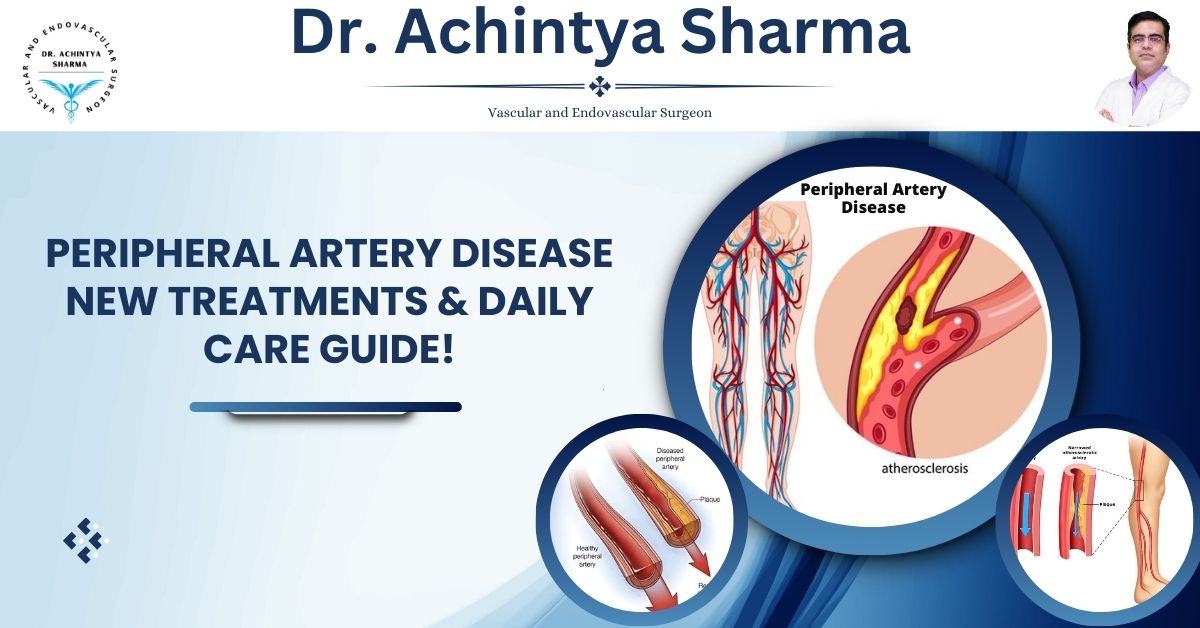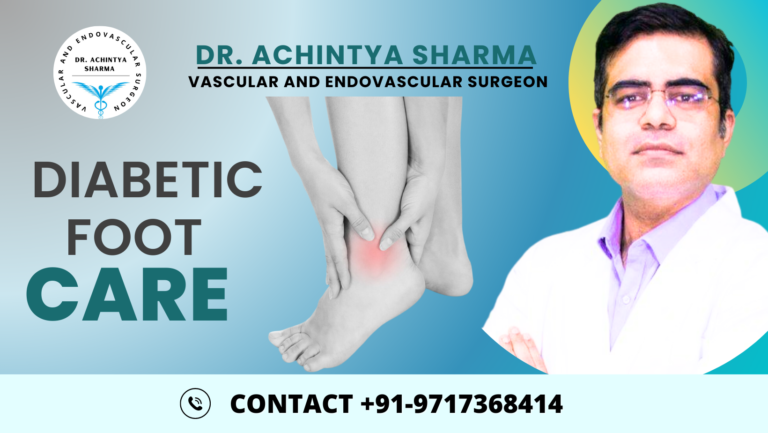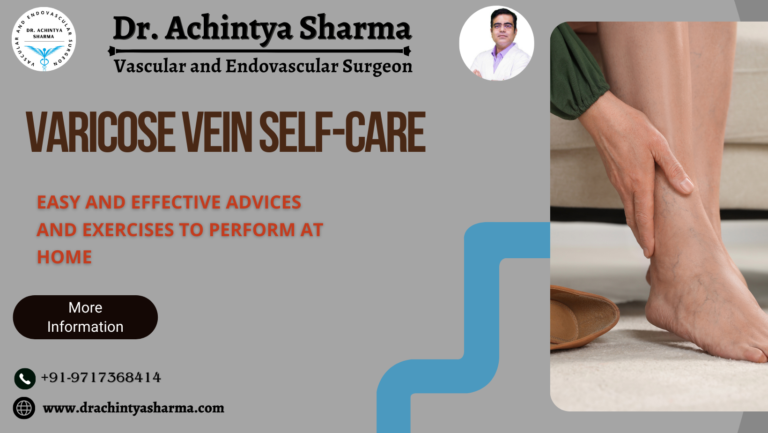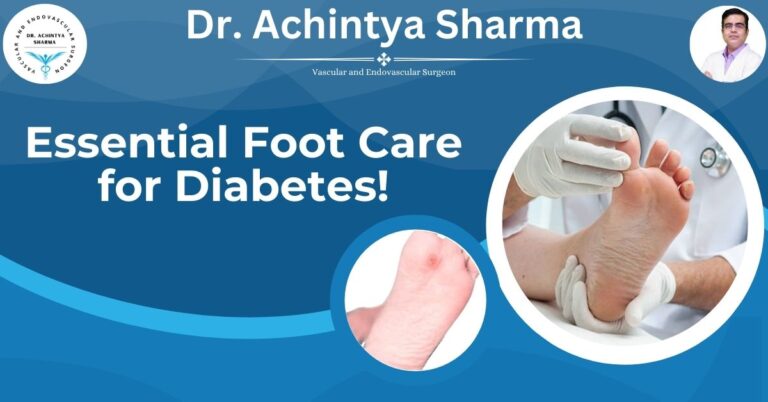Peripheral Artery Disease (PAD) is a serious vascular condition caused by narrowed arteries, leading to reduced blood flow to the legs and feet. If left untreated, PAD can cause pain, mobility issues, and even amputation in severe cases. Fortunately, with early diagnosis and the right treatment, patients can improve circulation and lead healthier lives.
This article explores self-care for PAD, home testing methods, new treatments, and management options for elderly patients, while also highlighting the expertise of Dr. Achintya Sharma, a leading vascular specialist.
Understanding PAD and Its Symptoms
PAD develops due to plaque buildup in the arteries, restricting blood flow to the lower limbs. The most common symptoms include:
- Leg pain or cramping during walking (claudication)
- Numbness or weakness in the legs
- Slow-healing sores on the feet
- Cold sensation in one or both feet
- Skin discoloration or shiny skin on the legs
If you notice these symptoms, seeking early treatment for PAD can prevent complications and improve mobility.
Peripheral Artery Disease Self-Care
While medical treatment is essential, self-care plays a crucial role in managing PAD. Here’s how you can take control of your vascular health:
1. Stay Active with Regular Exercise
Walking and low-impact exercises help improve blood flow, reducing PAD symptoms. Supervised exercise therapy (SET) is highly recommended for PAD patients.
2. Adopt a Heart-Healthy Diet
A diet rich in fruits, vegetables, whole grains, and lean proteins can help manage cholesterol, blood pressure, and blood sugar levels—all essential for controlling PAD. Avoid processed foods, trans fats, and excessive salt.
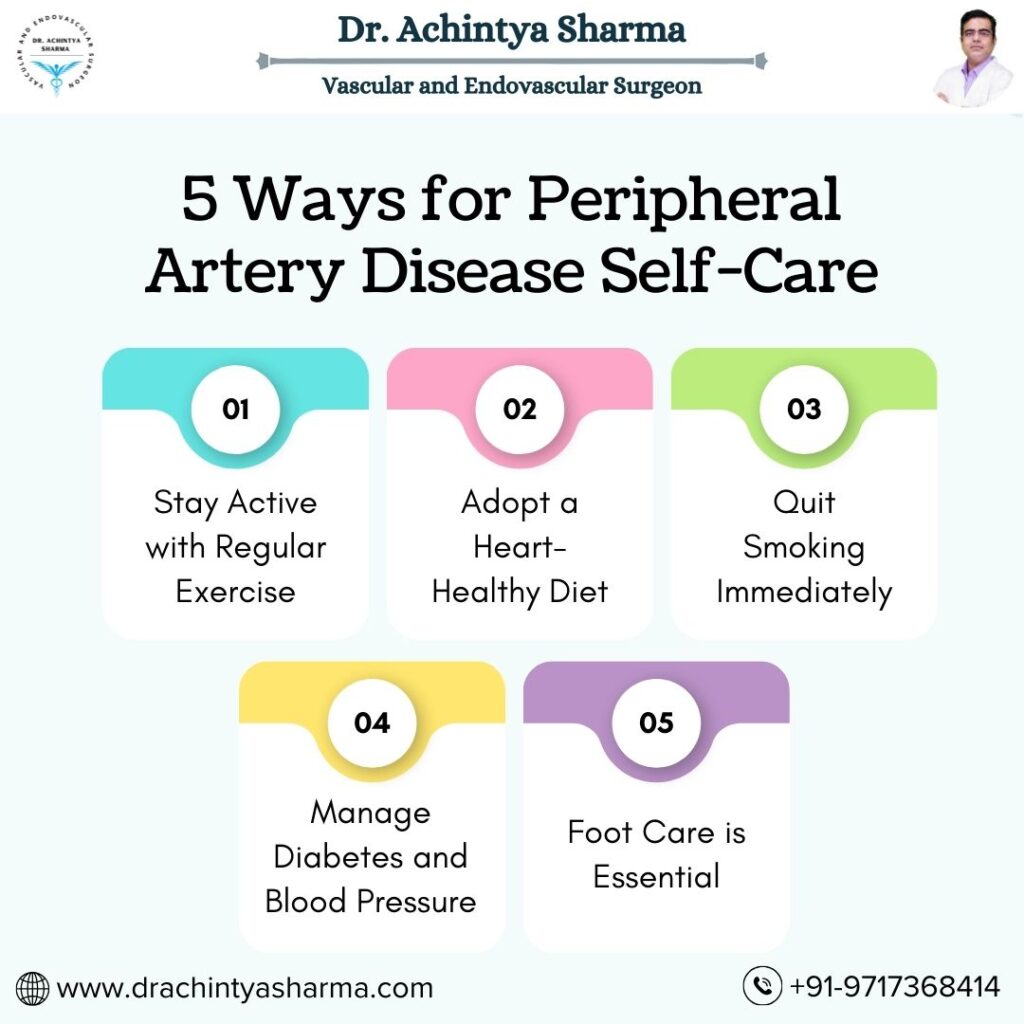
3. Quit Smoking Immediately
Smoking damages blood vessels, worsens PAD symptoms, and increases the risk of heart attacks and strokes. Quitting can slow disease progression and improve circulation.
4. Manage Diabetes and Blood Pressure
If you have diabetes or hypertension, keeping them under control reduces the risk of PAD-related complications.
5. Foot Care is Essential
PAD patients have poor wound healing, increasing the risk of infections. Regularly check your feet for cuts or sores and wear comfortable, well-fitted shoes.
How to Test for PAD at Home
While professional diagnosis is essential, you can perform some simple home tests to check for possible PAD:
1. Ankle-Brachial Index (ABI) Test
- Use a home blood pressure monitor to measure the blood pressure in your ankle and arm.
- If the ankle reading is lower than the arm, it could be a sign of poor circulation due to PAD.
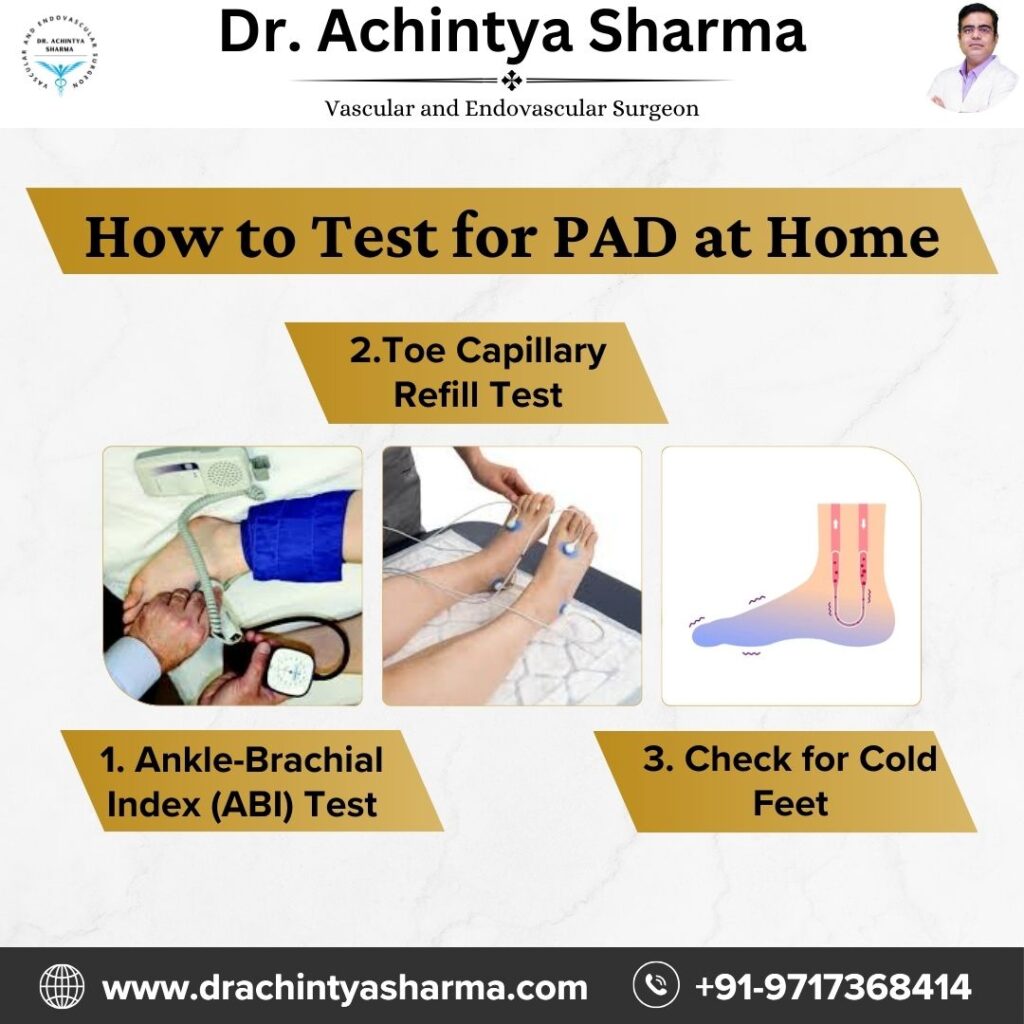
2. Toe Capillary Refill Test
- Press on a toenail until it turns white, then release.
- If it takes longer than 3 seconds for the color to return, it may indicate reduced blood flow.
3. Check for Cold Feet
If one foot is colder than the other, it could suggest restricted blood flow—a key indicator of PAD.
If any of these self-tests show abnormal results, consult a vascular specialist like Dr. Achintya Sharma for an accurate diagnosis.
New Treatments for PAD
With medical advancements, new treatments for PAD offer better outcomes and faster recovery. Some of the latest innovations include:
1. Stem Cell Therapy
Stem cells have the potential to regenerate damaged blood vessels, improving circulation and reducing symptoms. This emerging treatment is showing promising results in clinical trials.
2. Drug-Coated Balloons and Stents
These advanced devices open blocked arteries while releasing medication to prevent further narrowing.
3. Atherectomy (Plaque Removal)
This minimally invasive procedure removes plaque buildup inside the arteries, restoring normal blood flow.
4. Gene Therapy
Still in its early stages, gene therapy aims to stimulate new blood vessel growth in PAD patients.
Treatment for PAD in Elderly Patients
PAD is more common in older adults, often complicating existing health conditions. Treatment plans for elderly patients should focus on safety, effectiveness, and overall quality of life.
1. Medication Management
Doctors may prescribe cholesterol-lowering drugs, blood thinners, and blood pressure medications to slow PAD progression.
2. Physical Therapy and Low-Impact Exercise
Elderly patients benefit from gentle exercises like cycling, swimming, or walking. Supervised physical therapy is ideal for preventing complications.
3. Minimally Invasive Procedures
For elderly patients unable to undergo major surgery, procedures like angioplasty and atherectomy provide effective relief with shorter recovery times.
4. Customized Treatment Plans
Dr. Achintya Sharma specializes in treating PAD in elderly patients, offering personalized care plans based on their health conditions and needs.
Why Choose Dr. Achintya Sharma for PAD Treatment?
Dr. Achintya Sharma is a renowned vascular specialist with expertise in diagnosing and treating Peripheral Artery Disease. He provides:
- Personalized treatment plans tailored to each patient’s condition
- Advanced, minimally invasive treatments for PAD
- Comprehensive patient education to promote self-care and lifestyle modifications
Final Thoughts
Peripheral Artery Disease is a serious but manageable condition. By combining self-care, home testing, and the latest medical treatments, patients can significantly improve their quality of life.
If you or a loved one are experiencing PAD symptoms, schedule a consultation with Dr. Achintya Sharma to explore the best treatment options.

